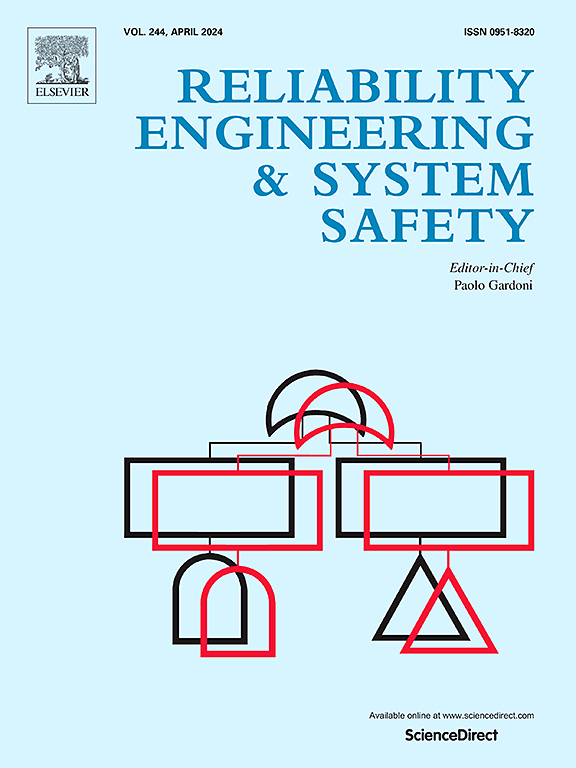基于适应度景观理论和关联规则挖掘的危险品运输系统风险拓扑分析
IF 11
1区 工程技术
Q1 ENGINEERING, INDUSTRIAL
引用次数: 0
摘要
考虑危险因素的耦合效应,确定危险物质运输系统的失效模式,对确保运输安全至关重要。本文提出了一种基于关联规则挖掘和适应度景观理论的危险品道路运输风险耦合拓扑分析方法。该方法可以反映风险因素的相关性和演化模式,从而为制定风险缓解策略提供依据。首先,采用文本挖掘技术识别关键风险因素,并收集包含165个条目的结构化数据集。其次,利用关联规则算法揭示子因素之间的潜在关系,利用设定阈值的Apriori算法提取强关联规则,并将其映射成描述系统风险因素耦合演化的景观模型;最后,通过定义适应度函数,对典型的系统失效路径进行拓扑分析。结果表明,直接从次级风险因素中挖掘破坏路径可以更详细地阐明系统的破坏机制。涉及人为因素和环境因素的耦合失效模式值得特别关注。车辆因素往往没有进一步演变就导致事故,因此需要建立相应的检查机制。本文章由计算机程序翻译,如有差异,请以英文原文为准。
Topological analysis of risks in hazardous materials transportation systems using fitness landscape theory and association rules mining
Determining the failure modes of hazardous materials transportation systems, considering the coupled effects of risk factors, is crucial for ensuring transportation safety. This study proposes a coupled topological analysis method for hazardous materials road transport risks, based on association rule mining and fitness landscape theory. This method can reflect the correlations and evolutionary patterns of risk factors, thereby providing a basis for formulating risk mitigation strategies. Firstly, text mining techniques are employed to identify critical risk factors and gather a structured dataset comprising 165 entries. Secondly, association rule algorithms are used to uncover potential relationships among sub-factors, employing the Apriori algorithm with set thresholds to extract strong association rules, which are then mapped into a landscape model depicting the coupled evolution of system risk factors. Finally, by employing a defined fitness function, typical system failure paths are further analyzed topologically. The results indicate that directly mining failure paths from sub-risk factors can elucidate more detailed system failure mechanisms. Coupled failure modes involving human and environmental factors warrant particular attention. Vehicle factors often lead to accidents without further evolution, necessitating the establishment of corresponding inspection mechanisms.
求助全文
通过发布文献求助,成功后即可免费获取论文全文。
去求助
来源期刊

Reliability Engineering & System Safety
管理科学-工程:工业
CiteScore
15.20
自引率
39.50%
发文量
621
审稿时长
67 days
期刊介绍:
Elsevier publishes Reliability Engineering & System Safety in association with the European Safety and Reliability Association and the Safety Engineering and Risk Analysis Division. The international journal is devoted to developing and applying methods to enhance the safety and reliability of complex technological systems, like nuclear power plants, chemical plants, hazardous waste facilities, space systems, offshore and maritime systems, transportation systems, constructed infrastructure, and manufacturing plants. The journal normally publishes only articles that involve the analysis of substantive problems related to the reliability of complex systems or present techniques and/or theoretical results that have a discernable relationship to the solution of such problems. An important aim is to balance academic material and practical applications.
 求助内容:
求助内容: 应助结果提醒方式:
应助结果提醒方式:


